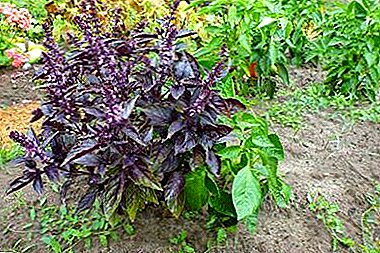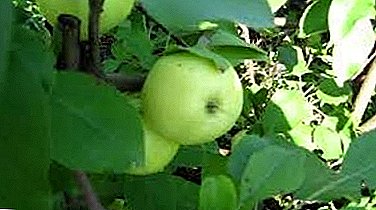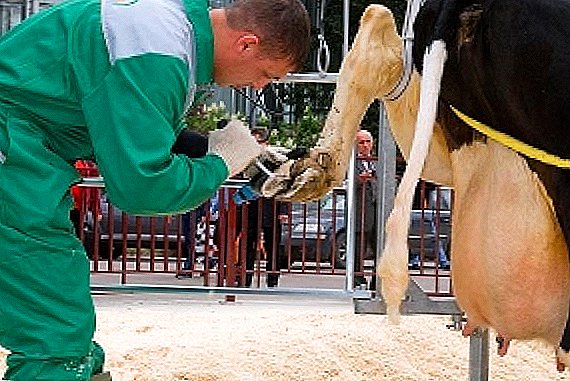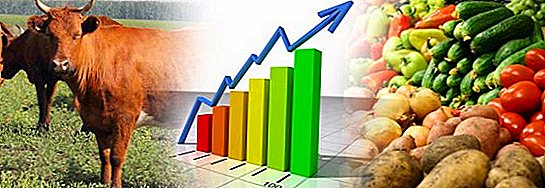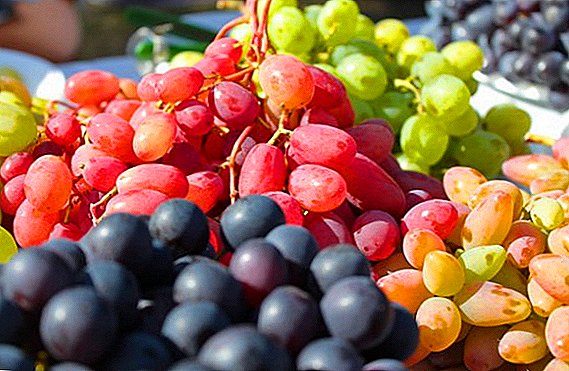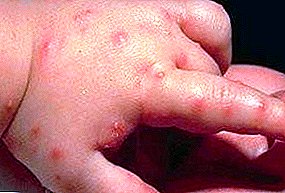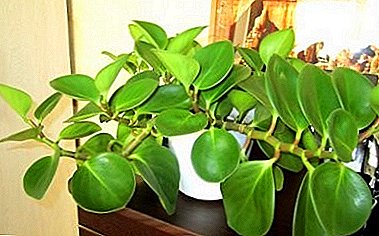
Thanks to the decorative leaves, this plant has gained popularity among fans of indoor plants.
In addition, peperomia mogololistnaya quite unpretentious, so grow it under the force of even an inexperienced florist.
Description and photo
Pepperomia magnolia-leaf - a representative of the Peppermines family. She comes from the tropics (South America, Brazil).
 The plant is a perennial, 25-30 cm tall, with fleshy stems covered with short-stem leaves of round-oval shape.
The plant is a perennial, 25-30 cm tall, with fleshy stems covered with short-stem leaves of round-oval shape.
Diameter each sheet plate about 5 cm, the surface is smooth, glossy.
Coloring from monochrome light or dark green, in some varieties with specks, spots, pale yellow or green stripes.
Bloom peperomia unattractive, its small inflorescences reminiscent of plantain spikelets.
Visually get acquainted with peperomiya "Magnolia" can be on the photo:


Benefit
Compact bush peperomii magnoliastvia received the name "friendly family". To have such a plant in your home is desirable to those in whose character contradictions, rebelliousness appear. The plant is able to smooth the intransigence of such people. Peperomia brings the atmosphere of goodwill and peace to the house.
Plants with a striped color help to overcome difficult life bands, as it were, light days come nearer. From a physiological point of view, this plant affects the digestive system and gallbladder, normalizing their work.
Special benefit brings peperomy for air purification she able to kill pathogens.
Home Care Rules
Content requirements this plant home Little, even with a little care, she will feel great and develop normally.
Peperomiya magnolistnaya does not like changing conditions of detention, so the transplant immediately after arriving from the store in your home will be an additional stress.
Conditions of detention
 It is not recommended to keep this type of peperomia on a too light sill, from which its leaves will brighten. Light for its cultivation needs a lot, but not direct, falling on the leaves, but scattered.
It is not recommended to keep this type of peperomia on a too light sill, from which its leaves will brighten. Light for its cultivation needs a lot, but not direct, falling on the leaves, but scattered.
Grows well she is when illuminated by various fitolamps or under normal indoor lighting, so you can grow it at some distance from the window.
The temperature of this flower prefers in the range of 20-25 degrees.
Doesn't like sharp drafts very much, with a sharp change in temperature will begin to hurt. And heat peperomia should be year round, as there is no pronounced period of rest in this species of plants.
How to water?
Peperomia magnolia dry tolerates short-term overdrying, but does not like overmoistening. This is due to the fact that the fleshy stems and leaves accumulate a large amount of moisture and spend it in adverse conditions.
Important! Especially dangerous is too wet soil in combination with low temperature. Under these conditions, the roots will begin to rot, and the plant will die.
Watering peperomia requires moderate in summer and rare in winter. For irrigation need separated, warm water.
Moisture requirement
During heating operation peperomia need spray daily - This is a way to protect it from drying out. The rest of the time it is not very demanding on the humidity of the air. In winter, when radiators are working, put the pot in a pan filled with a layer of expanded clay. It should be regularly moistened, but not allow the bottom of the pot to come in contact with water, so as not to overwet the roots.

How to fertilize?
The plant, transplanted in time to a fresh nutritious soil, does not need frequent dressing.
It is enough to feed the perperomy once every 2-3 weeks, but use only half the recommended dose on the package with fertilizers.
Top dressing is carried out during the vegetative period, and in the winter stop.
Plant formation
To bush peperomii was lush, with numerous side shoots, the stems need pinch regularly.
Shorten tops of shoots are also needed if the plant has dropped the lower leaves.
Transplant rules and soil requirements
The plant is recommended to plant in a shallow dish, with a large drainage layer, as it has weak, short roots.
It is recommended to transplant young perperomy annually, choosing a pot 3-4 centimeters larger than the previous one. When the plant is three years old, transplanting is reduced, it is carried out in a year. An old plant should be transplanted only if the roots have appeared from the drainage hole.
The composition of the soil should be loose, with enough nutrients. Mix for planting: leaf soil, sand, peat and humus (2: 1: 0.5: 1).
ATTENTION. Insufficiently friable, heavy soil will cause root rot.
Breeding methods
- Division
Carried out when transplanting plants. Bush is divided into two parts, carefully unraveling the roots. Each part is treated with charcoal powder for disinfection and planted in a separate container. After planting the bush is not watered during the week. - Cuttings
For this type of breeding choose the billet with 2-3 knots, cut from apical shoots. Rooting is produced in a mixture of sand and turf. Substrate needs to be moistened regularly. Planted at a depth of 3-4 cm stalk cover to create greenhouse conditions. Rooting should be carried out in warm (24-25 degrees), in the cold, the stalk will rot. - Seeds
 For crops pick up flat dishes filled with a mixture of sand and earth.
For crops pick up flat dishes filled with a mixture of sand and earth.Shallowly embedded seeds moisturize and cover with glass. Sprouting is carried out in a warm place.
The container must be lit, but not by direct sunlight, otherwise the seeds will be welded.
When two or three true leaves appear on sprouts, they are seated in small (7-8 cm) pots.
Diseases
All diseases of this plant are associated with the violation of the necessary conditions of detention.
- Leaf blackening occurs due to a sharp decrease in temperature.
- Dropping leaves - from a lack of moisture. This often happens if in winter the peperomia is kept close to the battery.
- Lethargy leaves occurs due to rotting of the roots or the defeat of the fungus during excessive watering.
- Leaf shrinkage occurs when the sun hits them.
Pests
The main enemies are spider mites and thrips. Contributes to their reproduction of these insects too dry air.
The appearance of spider mites is indicated by a white, fibrous plaque. The plant should be washed with warm water and then treated with insecticide.
Thrips lay larvae on the bottom of the leaves. They pull the juices from the leaves and dry spots appear on the surface. Regularly inspect the flower, and noticing the specks on the leaves, wash it with warm water and diluted with soap. Then spray the leaves with poison.
Less frequently infected with peperomia is a mealybug. These insects with a white body are very small, it is almost impossible to detect them with the naked eye. The bug quickly multiplies. Struggling with the treatment of the leaves with an alcohol solution.
Unpretentious and easy to clean and at the same time having a decorative appearance of the plant with a little care will become a real decoration of the interior of your home.


 For crops pick up flat dishes filled with a mixture of sand and earth.
For crops pick up flat dishes filled with a mixture of sand and earth.